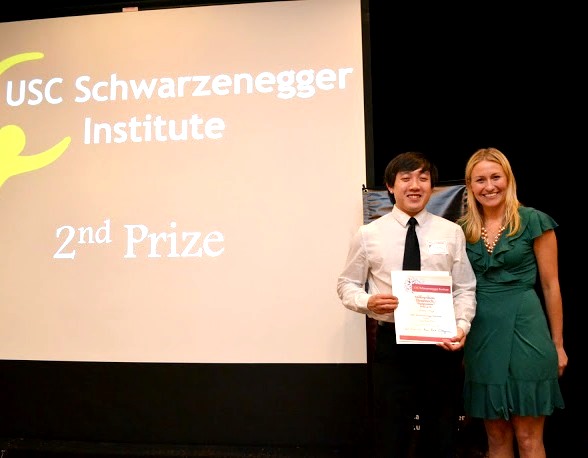
Thomas Do – Proton Assisted Reduction of CO by Cobalt Pyridine Amino Macrocycles
May 11, 2015 8:03 pmProject Summary: With the increasing amount of CO? in the atmosphere, the need to reduce it is rising. A popular solution is to convert CO? into liquid fuels, electrochemically. Our work consists of developing catalysts for the reduction of carbon dioxide into useful organic molecules that can be converted to liquid fuel.
Main Issue: Secondary sphere interactions, provided by built in proton relays in our catalyst trap reactive intermediates using hydrogen bonds and lower the energies associated with the reduction of CO?. Various metal centers and functional groups will be chosen to in order to study the reactivity of the catalyst as well as its mechanism.
Learning Outcomes: I learned new synthesis and characterization techniques from making these catalysts. Aside from those, I also learned how to work in glove-boxes and how to use Schlenk-lines. In order to test our catalysts, I learned how to run electrochemical experiments.
Student Contribution: Participated in synthesis and characterization of macrocycles
Participated in electrochemical studies of macrocycles
Abstract: A series of amine bridged calix[4]pyridine cobalt complexes (CoPy?(NR)?²?, where R = H, Me, Allyl) were synthesized and studied for catalytic activity for the reduction of CO?. Single Crystal X-Ray diffraction shows a saddle-like geometry, with the bridging amine groups pointing outwards. This geometry has been noted to be suitable for CO? reduction, because CO? is within hydrogen bonding distance from the amines. These secondary sphere elements are thought to stimulate enzyme like pendant proton relays to be used to capture CO? and assist with proton coupled electron transfer during its reduction.
These complexes were studied using cyclic voltammetry, under inert atmosphere and CO?, in the presence and absence of protons. All complexes showed reactivity towards CO? reduction. CoPy?(NH)?²? was determined to be the more active catalyst of the complexes, with bulk electrolysis showing a Faradaic Efficiency of ηCO= 100% ± 10% with high TOF. CoPy?(NMe)?²? and CoPy?(NAllyl)?²?, however, were found to be less active towards CO? reduction.
Categorised in:
This post was written by Admin3
